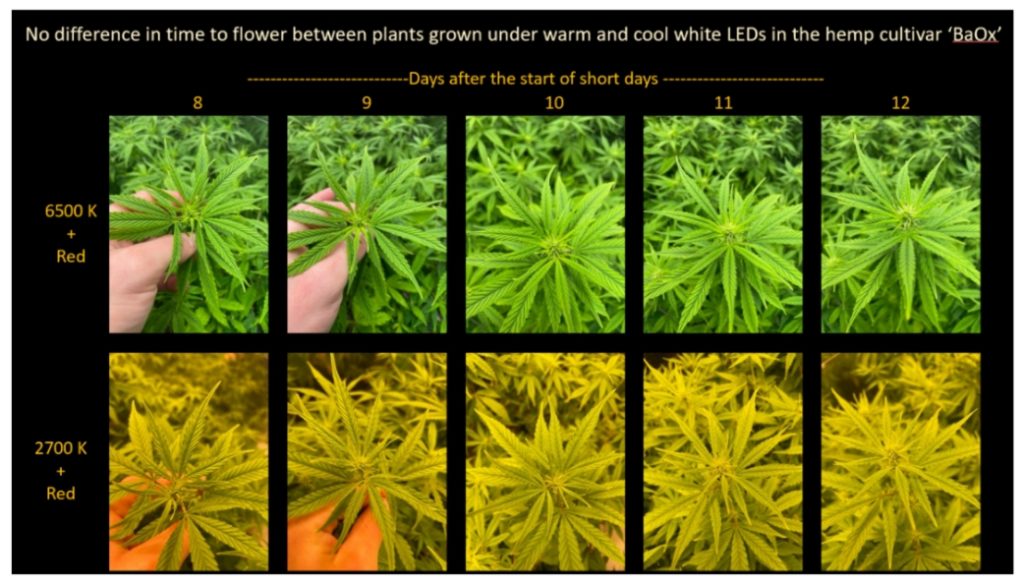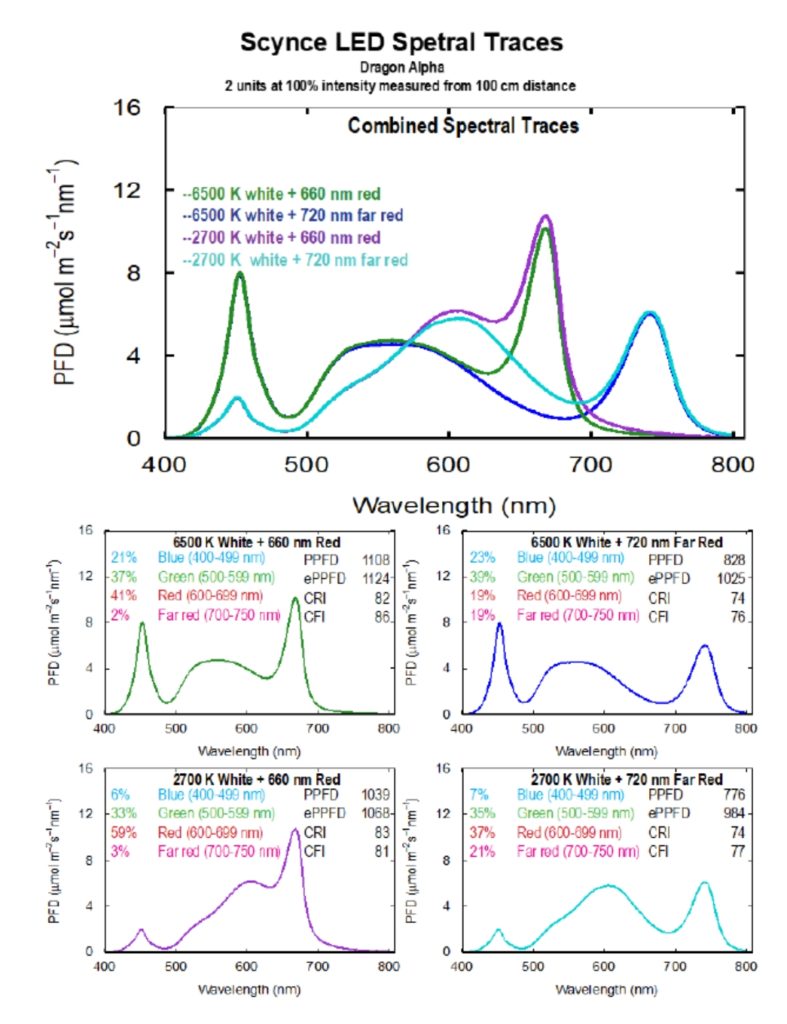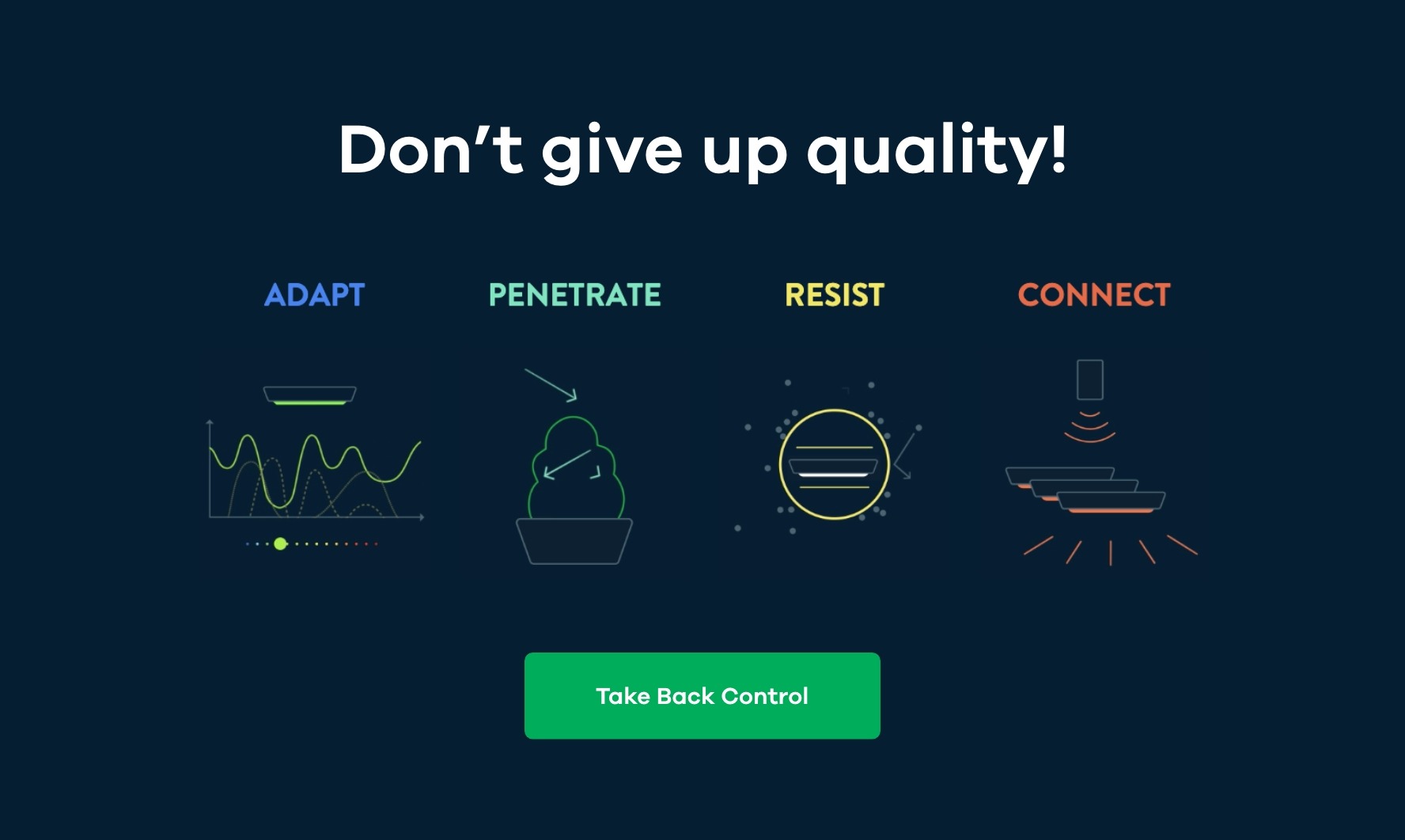Being able to control the type (quality) of light your plants are getting during the different phases of growth is mandatory if you are trying to influence the morphology of the plant.
For this reason, Bruce Bugbee and the Crop Physiology Laboratory at Utah State University have entered into a collaboration with Scynce LED to explore the impact of spectral quality on photosynthesis and crop development in a laboratory setting using Scynce’s patented LED grow light technology.
Starting out with over 65 LED fixtures in phase 1 and up to 80 more in phase 2, this collaboration will make Scynce LED their preeminent lighting partner.
Bruce went on to say that, “This partnership allows us to examine Scynce LED technology under laboratory conditions and examine the value of diffuse light to increase whole plant photosynthesis per photon.”
Research began in late 2021 and the following two early stage results, directly from the Crop Physiology Lab at USU, were released in early January 2022.

Slide 1. “We were not able to reproduce the accelerated development rate that was observed by some of your growers under the two color temperatures. Something other than color temperature is likely affecting the rate of development in the grower observations.”

Slide 2 shows the output of the lights. “We have confirmed that the output is not affected by reduced atmospheric pressure (or shipping). This slide also shows how total output doesn’t drop or diminish when choosing different spectrums (when employing ‘full power spectrum tuning’).”
See Spectrum TuningWith the advent of “full power spectrum tuning,” utilizing technology that is backed by multiple patents.
You can now have complete control over the spectrum delivered without the loss of any power (intensity).
As the team at USU continues their research, it seems that they continue to surprise themselves as they fully unpack the technology that Scynce LED has built into their lighting fixtures. Dr Bugbee had this to say in a February 2022 communication:
“A significant advantage of the distributed light output from Scynce’s lighting fixtures has become more evident. The uniformity of PPFD is maintained as the plants grow closer to the lights. LED fixtures with more focused output can be spaced to achieve uniformity at one plane below the lights, but as the plants grow taller the uniformity decreases, resulting in non-uniform shape, color and quality of flower buds.
Even more than diffuse light, this ‘vertical uniformity’ in PPFD may be the biggest advantage of broad spatial photon distribution, [which is unique to Scynce LED]”.
We promise to hold true to our path and continue to develop technology that creates new ways to unlock the hidden potential of all plants.
Tribe of Scyntists



